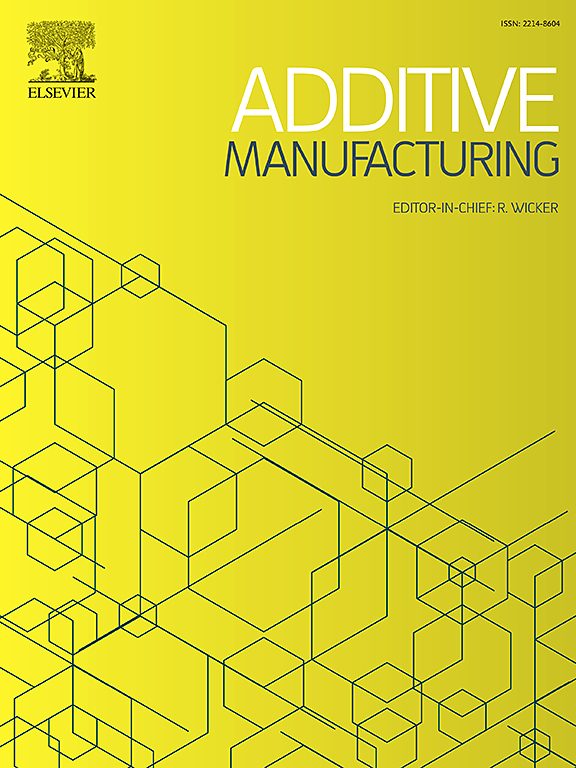Large-scale additive manufacturing of optimally-embedded spinodal material architectures
IF 10.3
1区 工程技术
Q1 ENGINEERING, MANUFACTURING
引用次数: 0
Abstract
We present a synergistic methodology to design large-scale 3D-printed structures based on a multi-material topology optimization formulation, which leads to the realization of three-dimensional hierarchical structures with spatially oriented non-periodic spinodal microstructures. The inherent characteristics of these unstructured architectures allow the design of optimized layouts with smooth transitions of spinodal material classes, accounting for varying porosity and orientation. The design and manufacturing processes are bridged by a topology-by-material optimization approach, in which the iterative process preserves the macro-scale continuity, while the microstructural topological space is optimized by a suitable distribution of multiple spinodal architected materials. To illustrate both the design and the manufacturing processes, we leverage the features of a large-scale water jetting powder-bed 3D printing technology, which makes use of aggregates obtained from powdered stone-like materials and magnesium-based binders. The optimized model is transferred to the printer by means of a voxel-based generation strategy. The approach, exemplified by means of several numerical simulations and physical 3D-printed samples, connects design conceptualization, material properties at different length scales, and the complex process of additively manufacturing load-bearing structures in a large-scale framework.
优化嵌入spinodal材料结构的大规模增材制造
我们提出了一种基于多材料拓扑优化公式的协同方法来设计大规模3d打印结构,从而实现具有空间定向的非周期旋轴微结构的三维分层结构。这些非结构化结构的固有特性允许设计优化布局,使独立材料类别平滑过渡,考虑到不同的孔隙度和方向。设计和制造过程采用基于材料的拓扑优化方法,其中迭代过程保持宏观尺度的连续性,而微观结构拓扑空间则通过多种spinodal建筑材料的适当分布进行优化。为了说明设计和制造过程,我们利用了大型水射流粉末床3D打印技术的特点,该技术利用了从粉状石状材料和镁基粘合剂中获得的骨料。通过基于体素的生成策略,将优化后的模型传输到打印机上。通过几个数值模拟和物理3d打印样品,该方法将设计概念、不同长度尺度下的材料特性和大型框架中增材制造承重结构的复杂过程联系起来。
本文章由计算机程序翻译,如有差异,请以英文原文为准。
求助全文
约1分钟内获得全文
求助全文
来源期刊

Additive manufacturing
Materials Science-General Materials Science
CiteScore
19.80
自引率
12.70%
发文量
648
审稿时长
35 days
期刊介绍:
Additive Manufacturing stands as a peer-reviewed journal dedicated to delivering high-quality research papers and reviews in the field of additive manufacturing, serving both academia and industry leaders. The journal's objective is to recognize the innovative essence of additive manufacturing and its diverse applications, providing a comprehensive overview of current developments and future prospects.
The transformative potential of additive manufacturing technologies in product design and manufacturing is poised to disrupt traditional approaches. In response to this paradigm shift, a distinctive and comprehensive publication outlet was essential. Additive Manufacturing fulfills this need, offering a platform for engineers, materials scientists, and practitioners across academia and various industries to document and share innovations in these evolving technologies.
 求助内容:
求助内容: 应助结果提醒方式:
应助结果提醒方式:


